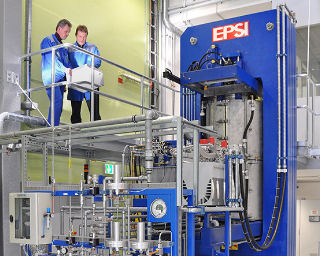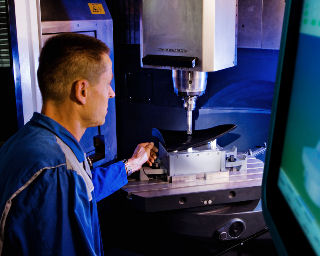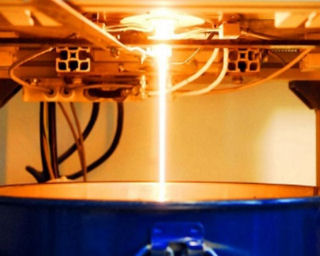
Materials and Processes

Expertise
Materials development
At Fraunhofer IKTS, materials development signifies, for the most part, further development, optimization and enhancement of commercially available ceramic raw materials for each application. Knowledge about the interaction of ceramic raw materials, additives, and their sintering behavior is essential in order to systematically adjust the microstructure according to the desired properties. In many cases, innovative materials also require chemical synthesis of phases or the application of chemical precursor bonds. Fraunhofer IKTS uses the variety of these precursors in order to convert them into functional materials, such as coatings, nanoparticles, and bulk materials.
Related Links
Powder technology and semi-finished products
Fraunhofer IKTS produces customized powders for ceramic and metal materials, and for composite materials. Homogeneous products with well-defined properties, such as compaction behavior, flowability and structure, as well as electric, magnetic, or catalytic functions are the objective. Powders and additives are selected according to the specifications profile, then homogenized, crushed, classified and prepared as suspensions, dry mixtures or granulates. In the process, laboratory findings can be transferred to pilot-plant scale on the basis of reliable routines. A multitude of materials are available at Fraunhofer IKTS as pastes and inks for coating technologies, including screen, gravure, inkjet and aerosol printing. In addition, powders are carefully selected with regard to their application, converted to suspensions, and their technological behavior optimized during the film or layer formation process.
Related Links
Shaping
Fraunhofer IKTS is developing manufacturing design concepts based on nearly every potential outcome of the ceramic shaping process. At IKTS, powder technology processes, such as uniaxial and isostatic dry pressing, are applied at high level and under high throughput capacities, and continuously refined. As thermoplastic shaping methods, 1K and 2K injection molding processes and microinjection molding are used particularly for new types of material combinations. 3D printing is primarily used to realize quantities of a small and medium scale. IKTS has the full spectrum of extrusion facilities at its fingertips, so that multichannel elements, honeycomb geometries and tubes can be manufactured from structural and functional ceramics.
In fact, extensive semi-finished ceramics are produced and processed at the highest level – including multilayer ceramics and ceramic microsystems technology – using the tape casting technology of the institute. A unique area of expertise offered at Fraunhofer IKTS is the connection between ceramic tape casting technologies and conventional processes, such as injection molding. Scientists can functionalize components using thick-film technology. With its innovative methods, like electrophoresis, gel casting and freeze casting, the institute offers a full portfolio of services in suspension molding. In principle, all processes are available for both development tasks and for direct contract assignments.
Related Links
Heat treatment and sintering
Fraunhofer IKTS has full command of the modeling and testing of debinding and sintering processes for materials and components using ultramodern measurement technology. Building on this foundation, the institute designs, conducts and optimizes heat treatment processes on the laboratory and pilot-plant scale. A broad range of heat treatment plants is available onsite, at temperatures reaching up to 2500 °C. This allows researchers to work within the most diverse range of atmospheres (high vacuum, oxidizing, inert, reductive), and with special gases and pressure-supported processes (hot isostatic pressing, gas pressure sintering, FAST/SPS, hot pressing). In addition, specific techniques, such as reaction bonding and cofiring, are mastered.
Green machining and finishing
Concerning green machining and finishing, Fraunhofer IKTS develops and offers economically feasible processing concepts for cutting, grinding, lapping and polishing of ceramic components. These range from ceramic-suitable clamping and handling techniques to the selection of ultrahard, high-performance cutting materials along with the associated processing parameters. Fraunhofer IKTS possesses ultramodern systems technology for this purpose.
Joining
Ceramic components frequently satisfy only a portion of the overall matrix of properties sought in the part or system. That is why technologies and materials are developed at Fraunhofer IKTS that enable a firm bond between various materials for a shared task or function. The spectrum ranges from the thermally cycling joints through vacuum-sealed applications with Al2O3 isolators, the metallization of oxide and nitride ceramics to high-temperature resistant bonds for carbide and nitride ceramics. Crystallizing glass solders and reactive solders upon contact with air, play a special role. Such joining bonds are frequently realized with the aid of easy-to-apply pastes and green films that IKTS supplies application-suitable.





